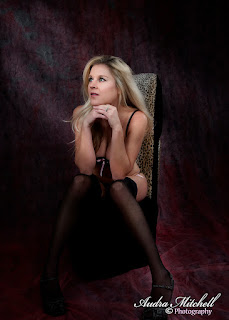Ever been in the right place at the wrong time? As a travel photographer, that scenario happens on a regular basis. Sometimes, I'm on a busy schedule and can't linger another 45 minutes to catch the right angle of the sun, or wait for that big rain cloud to move away. But I just know that the shot I want to capture will be cherry with just a little more sun glow and darker, richer shadows.
Wait for the light or create the light?
What makes me different than other photographers is that I see the completed "picture" in my mind's eye, even in less than perfect conditions. I shoot the scene "as is", knowing that I will take that image into my digital darkroom and develop it to meet my vision of what the scene should look like, or -- with a little imagination -- could look like. Is that cheating? Not at all! It's similar to layering stacks of filters on a camera like the photographers did in the film days and tweaking the development in the darkroom. But now, in the age of digital, we can go even farther in our image processing, commonly referred to as "post- processing".
In the post-processing stage of photography, the typical photographer may adjust the contrast or sharpen the details of the photo, maybe even touch up a zit or two. Perfectly acceptable. However, what sets my style of photography apart from other, even more experienced, photographers, is a high emphasis on post-processing and creating special effects to a otherwise "not so special" photograph.
 |
| AFTER |
 |
| BEFORE |
I gave the photo a low key lighting effect, changed the light blending mode, boosted up the reds, and brought in a dark glow to give the photo an air of eeriness, appropriate for a cemetery. Lastly I brought down the darkness of the corners and edges to draw the viewer's eye toward the mausoleum as the key focal point in the photo. This final effect is what I saw in my mind's eye and is why I decided to snap this photo.
I rarely show a client the pictures in my camera at the shoot. Firstly, it takes away from our shoot time, and often times, clients can obsess about looking through the 3.5 inch viewfinder of my camera, worrying about this or that being too light, their thighs appearing too large, or a myriad of other distractions. Secondly, I know what I am looking for as a photographer, and I know from experience what is a workable photo when I review it in the camera while taking the shots. Often times, I may have limited lighting equipment or space to work with, so I shoot the scene with good exposure knowing that I will add the appropriate lighting that lines up with my vision in the post-processing stage.
 |
| BEFORE |
Look at the photo on the right in the "before" stage. It is a well-exposed image that just lacks atmosphere and interest. It is a lovely pose, but maybe not a "seller" for me. When I shot this photo, I told my client to look wistfully up, as if you are looking toward an open window. I had the idea of making this shot dark and shadowy with the effect of a few light rays cutting in through a window, dappling the subject in light.
 |
| AFTER |
Now, we have a work of art.
No comments:
Post a Comment